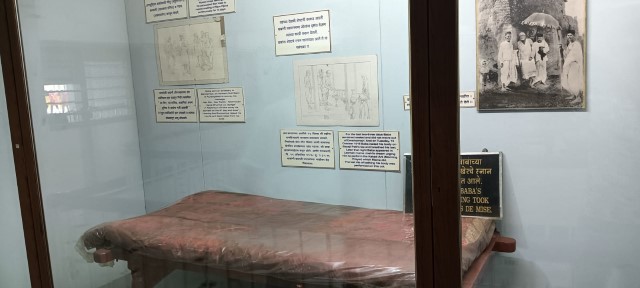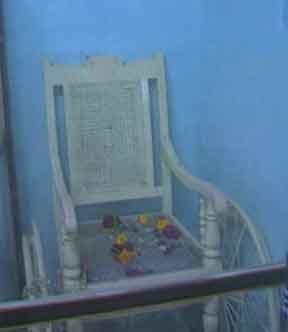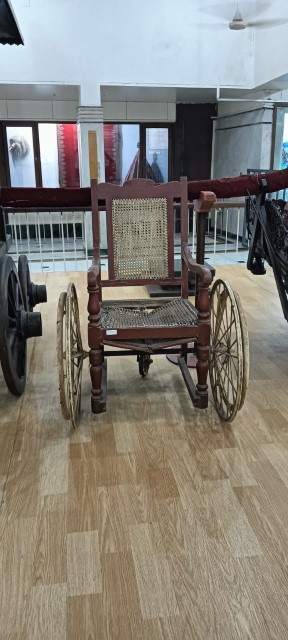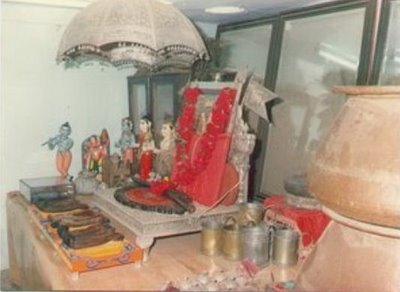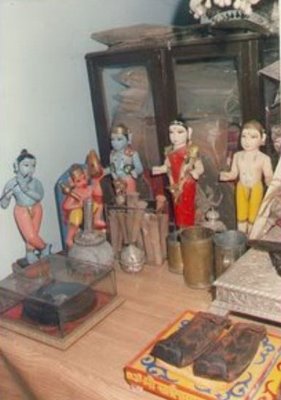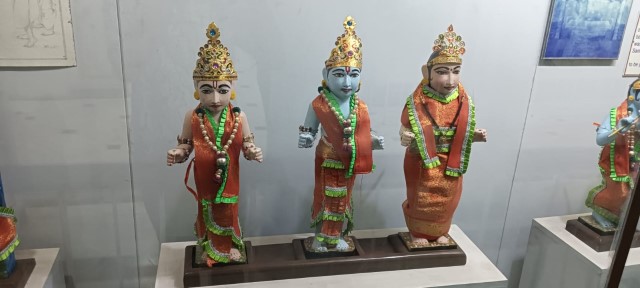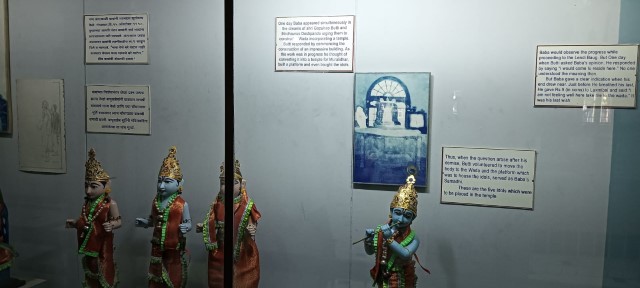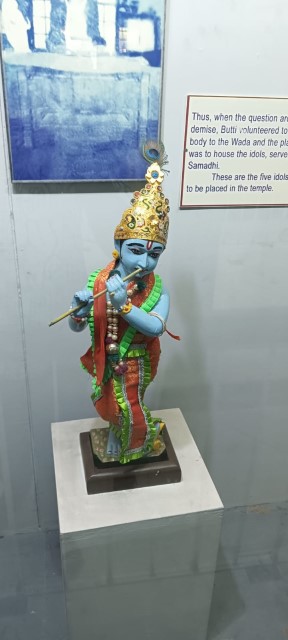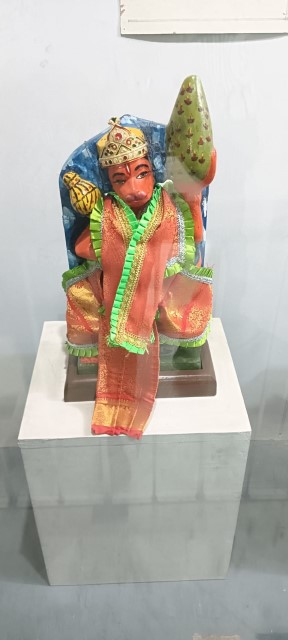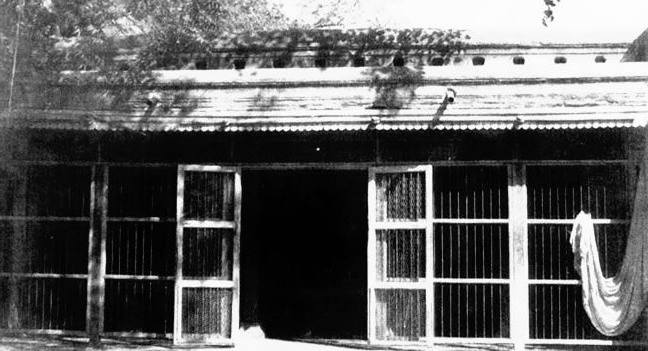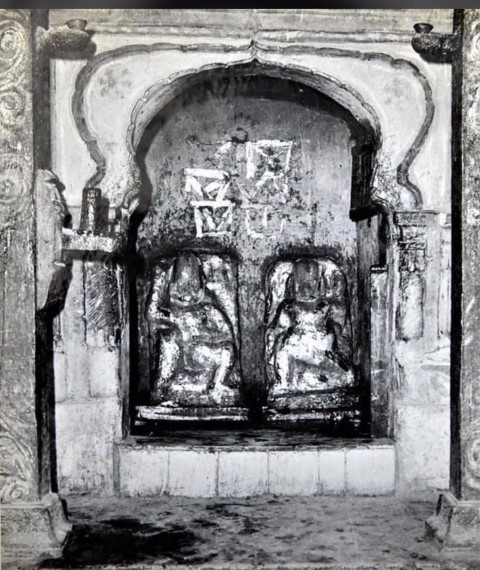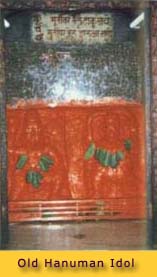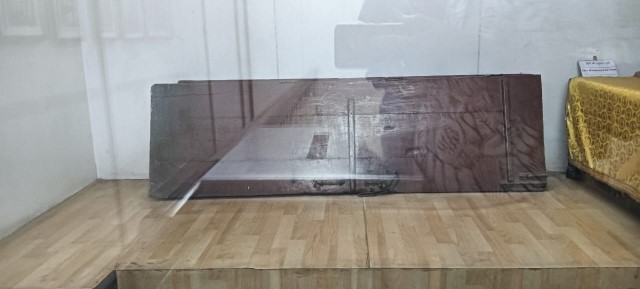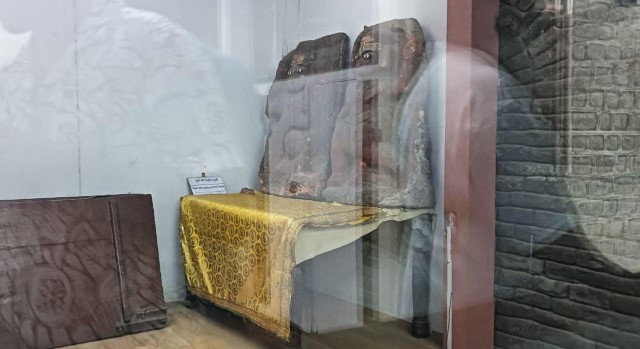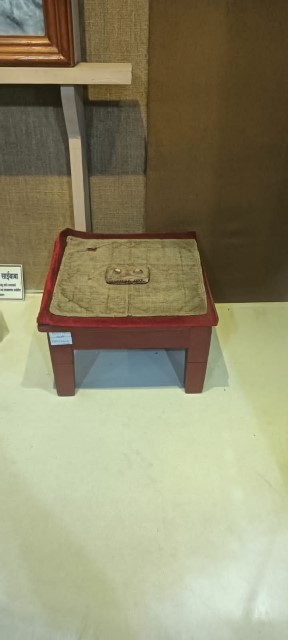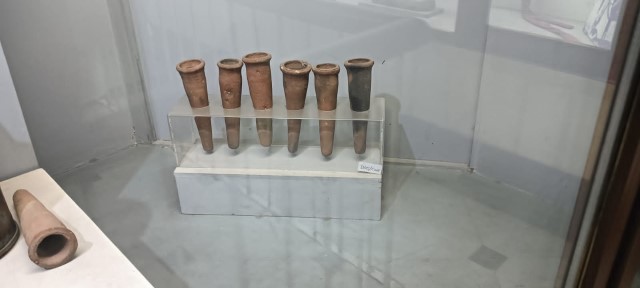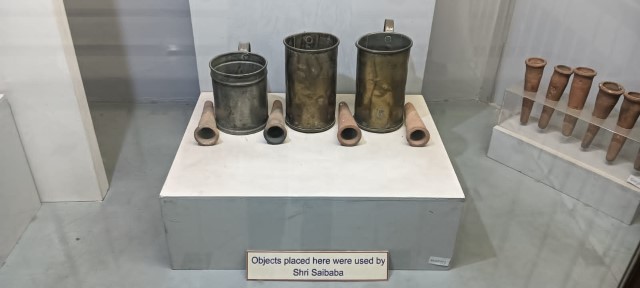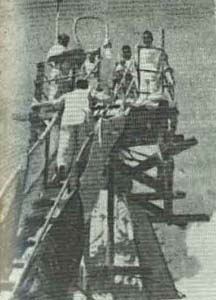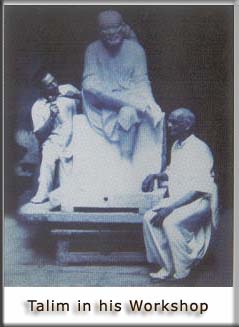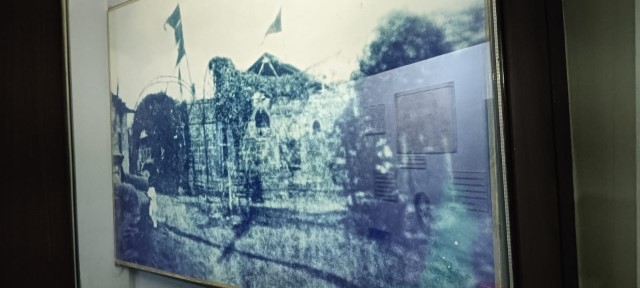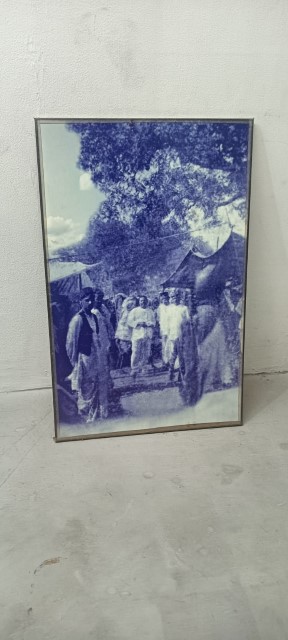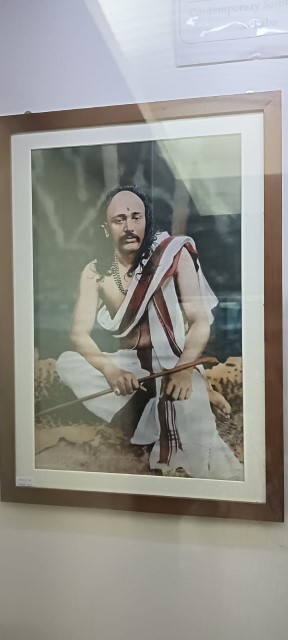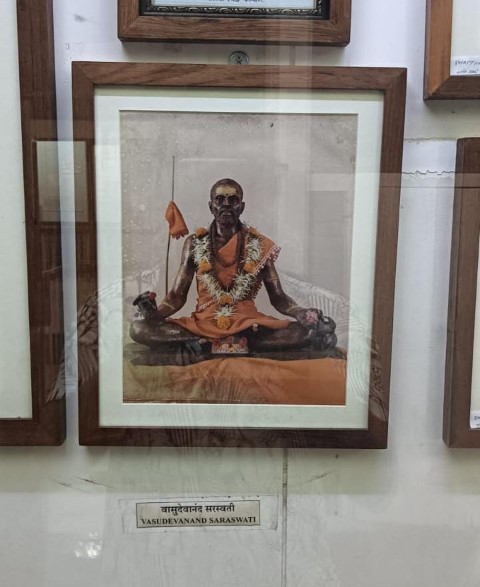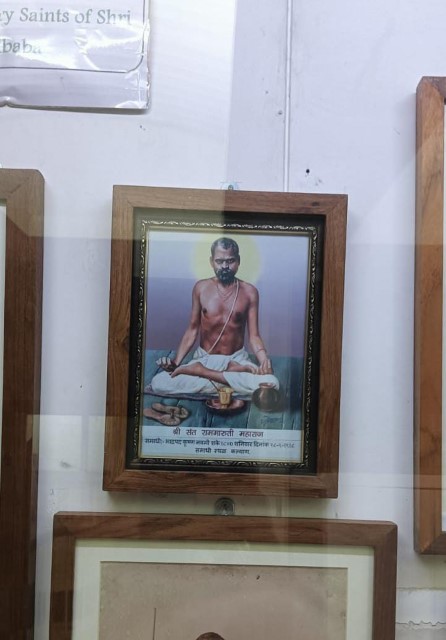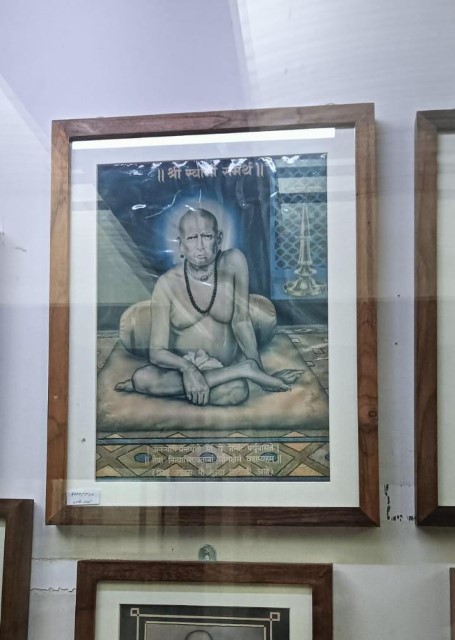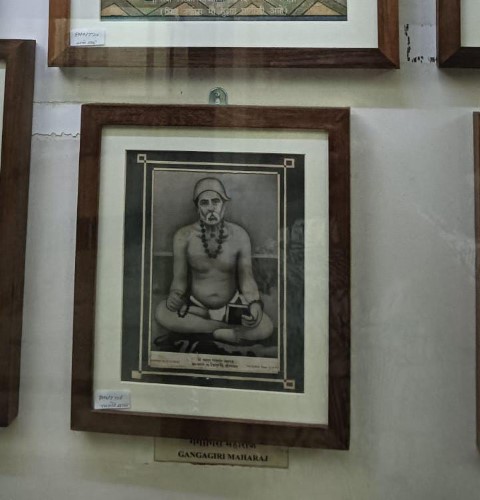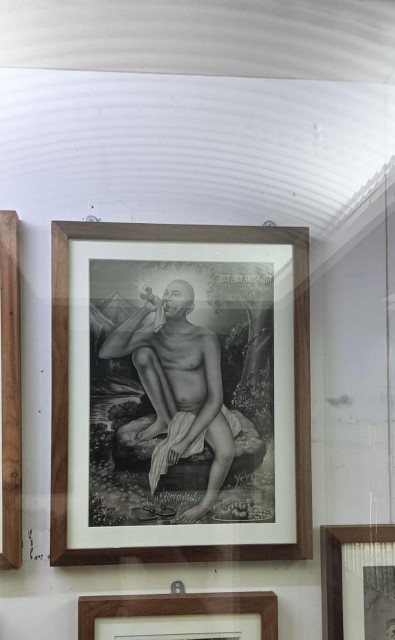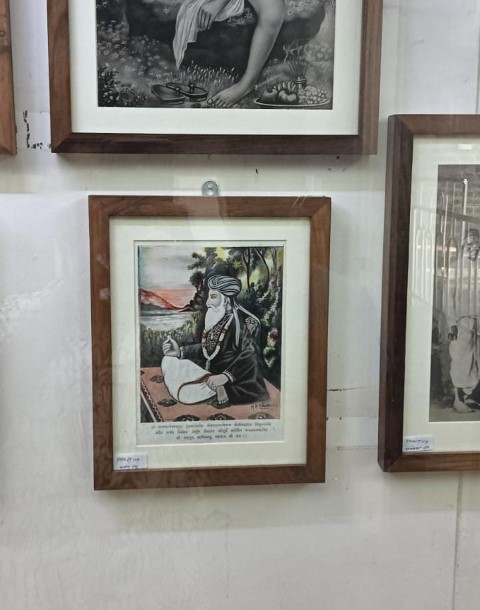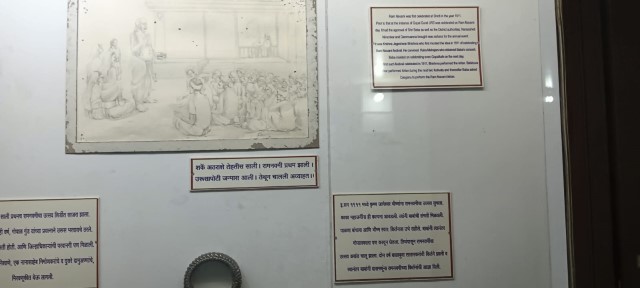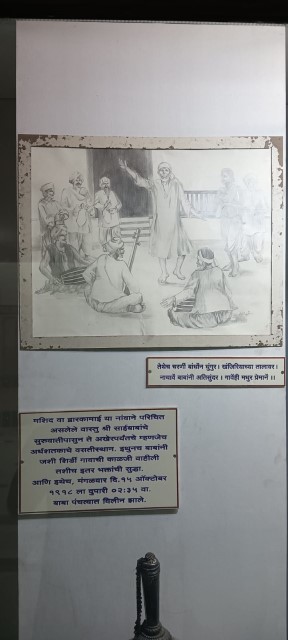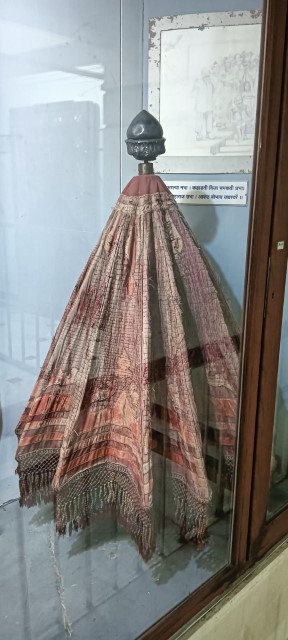Shri Sai Baba Museum Shirdi
Part of Dixit Wada has been converted into a beautiful two storied Museum. Sai Museum in Shirdi is a rich repository of all things associated with Shri Sai Baba. Kept under the maintenance of Sai Baba Sansthan of Shirdi, the Museum has some of the most intimate and personal belongings of the Spiritual Guru Sai Baba. Devotees from across the world visit this Museum that is part of Samadhi Mandir Complex. The Sai Museum has carefully kept many of the things that were close to this charismatic Guru.
ARTICLES INSIDE MUSEUM Samadhi Mandir Replica On entering the Museum, on the left side devotees can see a replica of the former Samadhi Mandir before the installation of Idol in 1954. There was the Silver throne on which an original photograph of Shri Sai Baba was kept and in front of it were the Holy Padukas. On the sides were the peacock feathers and there was a silver umbrella over the photograph.
Gramophone A travelling circus company had come to Shirdi. Everyone was very excited about it. The circus company had this Gramophone and since nobody had heard of a gramophone at that time all the people of Shirdi including Children excitedly went to hear this magical instrument could produce music. When the circus company left Shirdi, they gifted this Gramophone to Shri Sai Baba. However, it is doubtful that Baba ever used it. It has an HMV record on it and is housed in the first floor of the Museum.
Stone Oil Container A stone oil container with a stopper and a silver neck is on display in the Museum. It is believed that Saibaba used this to store Oil. As we all know, Baba loved to light lamps, and in this container He kept the oil that he used to light the lamps. There are little niches in the wall inside the Dwarakamai to hold Diyas. Baba used to light lamps and place them in the niches and on the steps of the Dwarakamai.
Tin Tumbrel Whenever Baba went for Bhiksha, He used to collect all the liquids He received in this Tin Tumbrel. Sai Baba was never bothered about taste. He did not particularly like or dislike anything. Whatever He received from Bhiksha, He used to mix them and ate just like that.
Saibaba going for Bhiksha Photograph This original photograph of Sai Baba shows Baba going for Bhiksha. The villagers would often bring their wares and set up temporary shops. Baba is in the vacant space near the Chavadi between Vamanrao Gondkar’s and Sakharam Shelke’s home. He has the Tumrel in his hand and a cloth over his head.
The five blessed biksha houses are: 1. Sakharam Shelke 2. Vamanrao Gondkar 3. Bhayaji Appa Kote Patil 4. Tatya Kote Patil and his mother the blessed Bayaja Mai Ganpat Kote Patil and 5. Nandram Marvadi i.e., . Nandram Sanklecha. Baba walked bare foot and sanctified the soil of Shirdi, while taking “Madhukari”. Fan This hand fan was used for fanning Sai Baba during Aarti in the Chavadi. Dada Saheb Khaparde or some other devotees would fan Baba when the Aarti was being performed. Baba sat in the Chavadi where the Simhasan is kept now (ladies side of the Chavadi). This is the place where Shej Aarti was performed.
Chillums These were some of the chillums used by Sai Baba. The chillums were very long and used by Baba to smoke tobacco. It is said that there was a potter who used to make them for Baba. Baba asked him to bring them when they were still unbaked. Hence, the chillums used to break after some use. In this way, Baba let the potter have a source of income by asking him to supply more chillums to Him. In the earlier days, a whole lot of chillums were kept on display inside the Dwarakamai, and later when the Museum was built, they were kept in Museum.
Fly-Whisk (Chowrie) This Fly-whisk (Chowrie) was used to perform worship to Sai Baba during the Aarti. We can see this kind of Chowrie used even today, in the Samadhi Mandir and in the Chavadi during Baba's Aarti.
Small Hand Mill Occasionally Sai Baba used to do Annadan for a large number of people (100 to 150). During such times, Sai Baba used this smaller hand mill.
Devotees can see big hand mill in the Dwarakamai which Baba used to grind wheat (Shri Sai Satcharitra, Chapter 1) to eradicate their sins. The story is as follows: In the Shri Sai Satchritra, Chapter 1 the wonderful leela of Baba grinding the wheat is described. During the year 1910, One day in the early morning, Baba sat down at the Quern to grind wheat. Four village women saw this; they took the peg of the quern from his hand and started grinding the wheat. While doing this they thought “Baba has no kith or kin and subsists on Bhiksha. So he will give us the flour”. After all the wheat was ground, they divided the wheat into four portions for themselves. Baba then used very foul and abusive language. He said, “Phukat Khau Randa” (free looting prostitute) and told them to take the flour and throw it on the village boundary. At that time, Cholera was raging through out the village. Seven people had already succumbed to the epidemic. This was Baba’s remedy to stop the epidemic. Since then, Cholera has not occurred in Shirdi, although neighboring villages are often afflicted. What was the relationship between Cholera and wheat flour? Cholera is called Mahamaari or the great killer. Mahamaari means sure death every time it strikes. There is no greater fear than the fear of death. Birth is followed by death at sometime for sure. One who has conquered the fear of death is immortal. So if one wants to conquer the cycle of birth and death, then one has to be liberated and free. If the ultimate goal is liberation then why is one bound? The fact is that human beings are bound by Karma (actions) and Maya. In fact karma and maya are inseparably interlinked. They are the two facets of life. Tazia (Abdagiri) This Red Tazia was carried by the pole-bearers during Palki Procession. Sometimes Dada Saheb Khaparde or Dixit used to carry it during Baba's Palki Procession. It is like an ornament or nishan which is honour given to the person taken in procession.
Kafni This looks like a silk Kafni which looks more like a Kurta. Sai Baba always wore a Kafni made from manzarpat. When the devotees wanted Baba to wear a coat or something, they would hold it about His body when He was sitting for Aarti, but they did not put it on Him.
Baba's Photograph This photograph is the original photograph of Sai Baba which was used by Late Shri.B.V.Talim to sculpt the idol of Sai Baba for installing in Samadhi Mandir in Shirdi (ref:Baba's Rinanubandh by Vinny Chitluri).
Palki Procession Painting This portrait was painted around 1917, when Jayakar came to Shirdi. He asked Baba for permission to paint the Dwarakamai pose and also painted this portrait of Baba's Chavadi procession (Ref:Shri Sai Sagar Magazine, Jan-March 2011). In the above color painting, you can see Nana Saheb Nimonkar on the right side, Das Ganu behind Nimonkar,Behind Das Ganu is Baala Shimpi, Buti on the left side of Baba, Moreshwar Pradhan holding the garland, Moreshwar Pradhan's son "Chota Sainath" also known as Bapu holding the pooja materials in the thali, Shamrao Jaykar's son holding the Rajat Danda (silver staff), Kaka Saheb Dixit behind Sai Baba on the right hand side, Bhagoji Shinde holding the Umbrella, Balaram Mankar (wearing glasses) in between Buti and Moreshwar Pradhan and Lakshmi Bai Shinde behind Bhagoji Shinde.
Sai Baba’s Original Photograph of going to Lendi Garden Baba would daily go to Lendi in the morning between 8.30 and 9.30. Baba used to normally walk barefoot when he went to Lendi as He intended to sanctify the soil of Shirdi with his Charan Sparsh. He would first come out of the mosque and stand leaning on the wall a while. After that he would stand opposite the Maruti temple to the monkey God Hanuman, and gazing fiercely at the temple would move his hands about making some kind of signals. He would then stand at the crossroads at Gurusthan as if talking to someone, and then proceed further. The devotees who were staying at the wada and those who had recently arrived would have the darshan of Baba there. They would all be standing in lines, eagerly awaiting Baba's arrival from the mosque. Baba would slowly move down the lines, lovingly greeting each devotee by name, and smiling his benediction at them. In this rare picture, we can see Nana Saheb Nimonkar (Shankar Rao Raghunath Deshpande) on the right side of Baba, Gopalrao Mukundrao Butti is standing on the left side of Baba. In this photograph, Butti is looking downwards. This is because, Butti never looked at Baba's face.He preferred to bow down to HIM and look downwards indicating his respect to Sai Baba (Guru). Bagoji Shinde used to hold the Umbrella above Baba’s head and Chopadhar Bala Kashiram Shimpi used to lead Baba from the front. If we closely observe this picture Baba is standing like lord Krishna (on one foot) we can also see that a thread is coming out of the Kafni that Baba is wearing.
Baba's Gurusthan Idol This Marble idol is 2'-6" in height, and is of “Baba sitting on the stone” posture. On Gurupoornima 1974 pratishta of this statue took place in Gurusthan with due formalities. Yashvanthrao D. Dave, a staunch devotee of Baba from Mumbai, donated the statue which was sculpted by Harish Balaji Thalim (son of late Balaji Vasanth Thalim, who had sculpted the Idol of Baba for the Samadhi Mandir).
In the year 2007, this idol was covered from head to toe and placed in the Museum to rejuvenate the Neem tree that was drying up due to lack of adequate supply of oxygen, nutrients and water. The Gurusthan was reconstructed and Baba’s Idol moved to Museum.
Shawl with Om Sign This is the Shawl which has an Om symbol printed on both ends. It looks as if one of the Om symbols is printed in reverse direction. But, this is not true, as the Shawl was to be worn around the shoulders, and thus both the Om symbols are upright after it is draped.
Saibaba Holding Tukaram Gatha in Hand This is a rare photograph of Baba holding Tukaram's Gatha in his hand. On Guru Poornima day numerous devotees came to Baba and placed a book before him, hoping that he might return it with his blessings. So they could study it and benefit from it. Sai Baba however took a book from one devotee and gave it to another. This photo is from the First Edition of the Marathi Sai Satcharitra. The text says Baba with Tukaram’s Gatha in Hand.
Sai Baba sitting in front of Dhuni Maa The below photograph is the original photograph of Sai Baba sitting in front of Dhuni Maa taken during Baba's period. This photo is one of the earliest Photo of Baba sitting in front of Dhuni Mai with His right hand next to His ear. It is of young Sai Baba. This photograph was taken in 1903 by a Photographer named Shri.Kashinath Gode from Pune. He still the glass slide of it. The first print of this photo is in Sai Mahabhakta Late Dammu Anna Rasne's shop in Ahmednager. A copy of this photograph is in the Museum upstairs.
Saibaba Sitting on Stone Photograph Devotees can see a small photograph of Shri Saibaba sitting on Stone in the Museum.
Saibaba Original Painting Devotees can see this original painting of Shri Sai Baba in the Museum.
Sai Baba’s with consent Photograph Vasudev Sadashiv Joshi of Sitharam & Company and his friend Chidambar Rao K. Gadre were devoted to Baba. They went to Shirdi every now and then. Once Joshi gave Rs.10/- to his friend and asked him to give it to Baba as Dakshina. He also made another request and that was to take a photograph of Baba and bring it back to him. Gadre left with Rs.10/- and went to Dwarakamai, prostrated before Baba and gave him Joshi’s Dakshina. He was silent, as he did not have the courage to request permission for the photograph. Baba too was silent for a long time. Then just before his departure Baba himself asked Gadre to take his photograph. Baba told him that the photographs should not be sold for a profit. He then gave him Udi and Prasad. - (Source: Ambrosia in Shirdi by Vinny Chitluri).
Sai Baba sitting with Outstretched Legs This is an original photograph of Sai Baba. In this photograph, Baba is sitting with His legs outstretched. Mhalsapati is on His left and Shama is on His right. The name of the Muslim lad who rests his head in Baba’s lap is Bhika who was born in Shirdi. He was the son of a Musalman. Bhika died many years ago (Source: Vinny Chitluri and Shirdi Sai Baba - The Saviour Book by Dr.Rabindranath Kakarya)
Marble Dattatreya Idol Devotees can see a Marble Idol of Dattatreya Idol near the Shawl with Om Sign.
Manzarpat This is the roll of Manzarpat cloth that Tarkhad used to bring for Baba's kafni when he was the manager of Khatau Mahajani Mills. Manzarpat is a coarse material, like Khaddar. Baba's Kafni were stitched from this Manzarpat cloth material.
Whenever Tarkhad brought Baba a roll of this Manzarpat cloth, Baba would ask Bala Shimpi to make Kafnis for Him. Baba never wanted new Kafnis for Him but Tatya Kote Patil used to poke his fingers into the torn places of Baba's old Kafni and tear it further, so that Baba was forced to get a new Kafni. During afternoons, Baba used to sit and mend the holes, but Tatya would relentlessly tear it further, put his fingers in and enlarge the holes, so that Baba was finally forced to take a new Kafni. Baba's Painting (Standing) This standing portrait of Baba is an edited version from Palki Procession Painting.
Baba's Padukas The Padukas to be worn by Shri Sai Baba are on display in the Museum. However, it is doubtful if Baba wore them, as Baba used to walk barefoot. In fact, some of the devotees used to say that when the ground was wet, and Baba walked to Lendi Baugh or elsehwere, the footprints that He left in the mud had some auspicious signs. Nana Saheb Nimonkar said he saw a Vajra and a Dhanush.
Holy Shri Sai Satcharita states that there were some very auspicious markings on Baba's feet and it was Muley Shastri who brought this important information to the forefront. He looked at Baba's feet and was so astonished to see these markings of Vishnu on them that he asked Baba to let him see His palm. However, Baba gave him four plantains and refused his request. Muley Shastri said "if the Feet have such great markings, then what must be on the palm of this great God?". That was the reason why he asked Baba to extend His palm so that he might see it. However, Baba refused to show His plam. Shyam Karan's Idol, (his Bridle, bells, etc.,) and Trainger Khasgiwale Devotees can see Shyam Karan's Idol and next to his Idol are all the items like bridle, bells, etc., that he wore. Devotees can also see Shyam Karan's photograph along with its trainer Khasgiwale who taught him how to dance. Kasam, a horse merchant, was distraught because his mare had no issue for a very long time. He vowed to Baba that if his mare had a foal, he would offer the first born to Baba. By Baba's grace the mare did have a series of issues. So he came and presented Baba with the first born. Baba called the horse “Shyam Karan”as his body was brown while his ears were black. The horse loved Baba and Baba reciprocated. The trainer Krishnaji Kashinath Khajgiwalle saw that the horse was well looked after and decorated. This horse was housed in the room situated on the eastern side of Dwarakamai; now called “Shyamsunder Hall”.
At every Aarti the horse would stand in the Sabha Mandap (where the tortoise is now) and wait patiently for the Arati to start. When the Aarti was begun he danced merrily keeping beat with the tiny bells tied to his feet. After Baba's Lalkari he would climb the central steps of Dwarakamai and bow to Baba. Baba blessed him by applying Udi to his forehead, then all the other Bhaktas received Udi and Prasad.
On Chavadi procession days he was fully decorated with mala, leg rings, bells and a beautiful cloth for his tail. All his decorative articles can be seen in the Museum. It was a sight worth seeing as he danced all the way to Chavadi leading the procession. After Baba entered the Chavadi he stood outside facing Baba. After Baba's Mahasamadhi he would dance in the Samadhi Mandir during the Aartis and also participate in the Chavadi procession. This beloved horse of Baba died in 1945 and his Samadhi is built by Saibaba Sansthan in Lendi Bagh. Bala Saheb Sulthe of Shirdi presented the idol of Shyam Karan. It was installed on the left side of the stone on which Baba sat. The statue was in remembrance of the deep love that Shyam Karan had for Baba and the love that Baba had reciprocated. Matka Support This is cloth material coiled and fashioned into a ring. In the villages, people use it as a support while carrying a Matka or a heavy load on their head. Baba had a Matka in the Dwarakamai, so most probably this was kept there under the water pot to balance it.
The Rath This Rath is located in the ground floor in the central portion of the Museum. This old chariot used to be kept in Dwarakamai earlier. This chariot was presented to Baba by Avasthi and Rege. The first procession was taken on Gurupurnima of 1918. The devotees entreated Baba for permission and Baba reluctantly agreed to the procession. But Baba never sat in this chariot but He walked along side.
The Palkhi This Palkhi was presented by Sadu Bhayya Nayak of Harda. Baba never sat in the Palkhi, but His photo was placed on it. Baba walked beside it. Every Thursday at 9.15 PM the Palkhi is brought in procession to Chavadi.
Baba's Bathing Stone This stone was prepared by Rambaji of Nasik. Hearing of Baba's Leelas he came to Shirdi in a mentally disordered condition. He used to drink Baba's bath water and used it on his body. By doing so he got rid of his mental disorder. As a reminiscence of this he gratefully prepared this stone and offered it to Baba to sit and have bath on it. This bathing stone was kept in the verandah of the Dwaraka Mai. After the Museum was opened the bathing stone been housed in the hall on the ground floor of the Museum.
Small and Big Utensil (Handi or Cooking Pot) There were these two Utensils (small and big Handi or cooking pot). As part of Annadan, Baba used to occasionally cook and feed villagers. Strangely he cooked for about 150 people with the Small pot while he cooked for about 100 people with the big pot.
Banners with Motifs of Gods During the processions, these banners were carried in front of Baba. They had images of Lord Hanuman on them. Lord Hanuman is always there in front of Arjuna's Rath, and so also in front of Baba, like Lord Krishna, these banners were always present.
The Wooden Cot After Baba took Mahasamadhi on 15th October, 1918, (Tuesday) at 2.30 PM His body was laid on this wooden cot for three days, till 17th October, 1918 (Thursday). As there were differences between His devotees as to where to intern Him (Ref. ESS, Ch. XLIII & XLIV), on this wooden cot His last bath was performed. With due formalities His body was brought in procession to Dagdi Wada (Samadhi Mandir). In the Garbha Gruha or Santrum Sanctorum i.e. the central portion which was reserved for installation of Murlidhar Idol His Samadhi was made. This cot was earlier in Dwarakamai but later housed in the Chavadi. This was placed in North West Corner of the Chavadi where ladies are allowed to go. Every Thursday it was taken out and placed in front of the Chavadi and Baba's palki is placed on it. After Aarti this cot was placed back along the north western wall of the Chavadi. But, after the Museum was built, this Wooden Cot was moved there. It is now displayed on the ground floor, in the central area of the Museum.
Baba's last bath was given to Him on the cot. In the Museum, these days devotees find a bed put on it. However, Baba never slept on a bed, and it is quite impossible for Him to have been given a last bath on a bed. However, from where this bed came, one doesn't know. The Wheelchair In 1886 Baba made an attempt to cross the borderline. He suffered from a severe attack of Asthma, and to get rid of it He took samadhi for 72 hours. Mahalsapathi guarded His body well (Ref. ESS, Ch. XLIV). Baba coughed off and on. This chair was presented by a devotee, for Baba to use, and move about in His old age. However, Baba moved freely and occasionally with the help of His devotees. Baba did touch this chair, and kept it, but never made use of it. This chair was placed on the north-western corner of the Chavadi next to the Wooden Cot. But, after the Museum was built, this Wheel Chair was moved there. It is now displayed on the ground floor, in the central area of the Museum.
The Idol of Deities (Krishna, Hanuman, Ram and Sita) Devotees can see Idols of Krishna, Hanuman, Ram and Sita in the Museum. It is doubtful if these Idols were ordered by Butti to be placed in the sanctum sanctorum where Baba's samadhi is there now in Samadhi Mandir. One day Butti and Shyama were sleeping in the upper storey of Dixit Wada. Butti had a dream vision in which Baba clearly said "build your waada most certainly including in it a temple". Simultaneously Shyama too had the same dream vision. He was filled with intense love and was choked with emotion and was weeping in his sleep. Butti questioned him regarding this. Shyama said Baba came close to me and said "let the Wada and temple take a concrete shape. I shall fulfil the wishes of all". Both were astonished to find that their dreams tallied. They went to Kaka Saheb and together they made a general outline of the project. Early next morning they went to Baba with the plan. Shyama said "Oh Deva, you don't even let us sleep peacefully". On hearing this Baba put His hands on His ears and said "Whatever anyone may say we have been in our own place." Of course, the plan was immediately sanctioned. Shyama got the basement, ground floor and well constructed. Baba watched the progress of the Wada on His daily rounds to Lendi Bagh. "Put a door here, a window there. Here to the east take out a gallery. It will enhance the beauty of the Wada" Baba suggested. Butti too eagerly watched the progress and he yearned to have a sanctum sanctorum, with an idol of Muralidhar, his Ishta Devata. Butti would never begin any work without Baba's consent and blessings. So he informed Shyama of his wish. Shyama asked Baba while He was going to Lendi Bagh "O Deva, Babu Saheb here says we should pull down both the walls dividing the hall and install an idol of Muralidhar. But your permission is necessary". On hearing this Baba readily gave His consent. Shyama quickly brought a coconut and asking Baba if the time was auspicious, broke it. Thus the sanctum sanctorum was built (Ref: Sai Satcharithra Chapter XXXIX). Butti afer spending lakhs of rupees to build this Wada in the year 1917, finally gave it to Sai Baba Sansthan. The Buti Wada in Shirdi is identical to his Wada in Nagpur.
Old Hanuman Mandir Doors and Idols The village Mandir had two Maruthi Vigrahas (idols) denoting one for Shirdi, and the other for Biragaon village. The temple is unique as it faces the south and had two idols. The old Idol of Maruti had one hand raised above his head and the other hand below covering his loin. This is symbolic of human life, the upraised hand represents ego, pride and power, while the other hand represents sexual urges. These are the very things that ruin us. Maruti is very powerful, extremely intelligent and he controls our urges. He is the Gram Devata of Shirdi so it behoves us to do Namaskar to him every day.
This temple welcomed saints like Devi Das and Gangagir of Punatamba to stay there. Devi Das lived at Shirdi many years before Baba came here. Baba stayed with him in this Maruti Mandir Baba often went to this temple to have satsang (discourse) with them (Refer Sai Satcharitra Chapter 5). At other times he went and sat in this temple alone and in solitude. Baba had a special bond with Maruti. On his way to the Chavadi, he stood in front of this Mandir, and waved His hands facing the temple making some mystical signs. Baba is by example showing us that we too should take some time out to pray to Maruti. Even today, every Thursday and on holy days when there is a Palkhi (palanquin) procession, the Palkhi stops at this spot. The Chopdars (mace bearers) proclaim Lalkari (sonorous saluations). This holy temple is used by ardent devotees who do Akhand Naam Jap and Bhajans. Daily Aratis are performed. Hanuman Jayanthi is celebrated on a grand scale as are other festivals. In Sai Satcharitra Chapter 7, under the heading “Renovation of the temples”, we will see how Baba got this temple renovated by Tatya Patil. Out of the Dakshina that Baba received from devotees, Baba allotted the money for the repairs of all the temples in Shirdi. In April 2009, soon after Hanuman Jayanthi, the temple was demolished by the Sansthan and a new temple has been constructed. Now the devotees visiting shirdi can see the renovated Human Mandir with life size statue of Hunuman replacing the small Idols which were present earlier. The two small Idols and the front doors were moved to Museum and are on display in the Museum. Songate (Chess Board) In the Museum Hall upstairs, just before devotees finish their rounds and are about to exit, there is a stool on which there is a cloth that has squares on it. This is called a Songate (Chess Board). When Baba slept in Chavadi, He would often play this Chess Game along with Tatya, Mahalsapati and rest of the devotees present there. Ofcourse, Baba would playfully cheat, and all the devotees would start screaming and shouting and Baba enjoyed this very much. During such times, Radhakrishna Mai used to send them Milk, water and other refreshments.
Flint (Clay Scraper) This piece of flint is kept next to the chillums It was used by Baba to light His Chillum. In those days, matchsticks were very long. Baba would strike a match against the flint and then light His Chillum.
Original Pictures of Places in Shirdi The photographs below are the original photographs of Shri Sai Baba Samadhi Mandir, Shirdi.
Installation of the Suvarna (Golden) Kalasha Photograph The Samadhi Mandir had a terrace roof. Later, a Gopuram and Kalash were added (Ref. Sai Leela Ank 4 year 29 issue October, November and December 1952). A glorious description of the Sthapana of the Golden Kalash is given in this issue. The Magazine says "34 years ago Baba took Mahasamadhi (15-10-1918) and that day was Dashami (Vijaya Dashami was just finishing and Ekadashi was starting). That same Muhurth came again on 29-9-1952 at this auspicious muhurth Sthapana of this Kalash was done”. Sai Baba’s 34th Punyathithi was on Mithi, Ashwin Shudh 9 Shake 1874 dinank 29th September 1952 when the golden kalasha was installed. It was celebrated from 28th to 30th. The whole of the temple complex was illuminated with numerous coloured light bulbs and it looked like heaven on earth. The sthapana was on the 29th and this day has to be written in gold. In 1918 when Baba took Mahasamadhi, Dashmi was over and Ekadashi had dawned about two hours earlier. This same constellation occurred again exactly after 34 years. Dr.Ramachandra Prahlad Paranerakar Maharaj, a Satpurush, learned and well versed with Puranas, conducted this 'Shubh karya'. To perform the Vidhi of Kalasha Sthapana many pundits and scholars from Pune, Alandi and Nasik were inivited. At 6:30 a.m. the Yagna started; this was followed by various rituals and pujas. At about 8 a.m. the three and half foot long golden Kalasha was taken in procession through the village. A multitude of devotees got a chance to do namaskar, to touch it and pray to it. Married ladies performed Pancharati at various places during the procession. The devotees chanted Baba’s name and loudly proclaimed “Sainath Maharaj ki Jai”. Simultaneously Vedic chants and religious rituals were being performed. This swarn Kalash is 3 1/2foot in height and was taken up at 10.45 AM to the top of the Samadhi Mandir with chanting and praying. There was a crane on which a special Vyas peeth or platform was constructed. On this Platform Dr.Ramachandra Prahlad Parnekar and the members of the Sansthan were hoised to the top of the Gopuram. The Sthapana was done at 11.00 AM by Dr.Parnekar who fixed the golden Kalasha on the Gopuram, exactly at the constellation of Dashami and Ekadashi as took place 34 years before. The devotees who were standing below joyously proclaimed salutations and victory to Sainath Maharaj. The Sansthan had got a special device that gave a 25 gun salute. A huge ochre coloured silk flag was brought by N.A.Savant, and that was fixed next to the Kalasha. Thus ceremony of the sthapana of the golden kalasha was concluded.
Talim Sculpting Baba’s Murthy (Idol) In 1952 there was only a photograph of Baba on top of the Samadhi. The Sansthan realized that devotees were flocking to Shirdi and soon the crowds would increase manifold. So they decided to install an Idol of Sai Baba. The Sansthan selected and met five famous sculptors from Maharashtra and B.V.Talim was one of them. Each of the sculptors was given a small black and white photograph of Baba.
The procedure to make the model was a long and complicated one. The model is kept in a ‘wet state’ for two months, so that the final facial features can be made. Following this the model is draped with a transparent film. Talim took all the necessary steps. Talim used to get up early in the morning at Brahma Muhurth, he went and did namaskar to Baba in the model. He prayed earnestly saying “Baba give me darshan once. Let me look at you intently and to my hearts’ content. Baba give me the strength and courage to make this murthy resemble you”. Talim was doing this prayer every moment of the day. Days rolled by but Talim did not have Baba’s darshan. Nor had he sculpted Baba’s face. The deadline for the completion of the model was about 10 days away. He received a call from the Sansthan asking him if the model was completed, as they would be coming to see the model. Talim continued praying day and night as he early awaited Baba’s darshan. Talim was a very devout and disciplined man. Every morning he got up before dawn, had his bath, and performed Puja to his Ista Deva Vitthal. Then he went downstairs to his studio, and performed Puja to the deities there and only then did he start his work. One day he went to the studio at the crack of dawn. His studio consisted of two rooms; the model was in the rear room; so was the switchboard for the lights of both the rooms. He made his way in the darkness to the room in the back. The room was engulfed in darkness. He stepped into the room and suddenly Baba’s model lit up like a myriad suns. So brilliant was the light that he closed his eyes. Then he heard “Bagh. Mala Bagh” (Look! Look at me) and there stood Baba in front of him. Their eyes met and he became oblivious of everything except Baba’s eyes. In a trance, Talim worked day and night and completed the model. The Sansthan committee informed him that they had seen the other models and were coming to see his model. Talim took them to the rear room. They stood before the model and Talim unveiled it. As he did this, the committee silently looked at the model; soon their eyes filled with tears of wonder, they came to Talim and held his hand and said “You, and only you can carve Baba’s murthy”. (As narrated by Harish B Talim in Sai Anubhav). On Dasara (7th October 1954), the life-like marble statue was installed next to the western wall on the platform, behind Baba’s Samadhi. Sai Baba's Idol is installed in the South-West corner inside the sanctum sanctorum of the Samadhi Mandir and the idol is tilted a little in such way so as to make the Idol faces the North-East corner. This idol is made of Italian marble by Balaji Vasant Thalim. The Italian Marble used for Sculpting the Idol of Sai Baba was ordered by Shri Sai Baba Sansthan itself and not found outside the Samadhi Mandir as it has been published in many Websites and Blogs. This Thalim made this idol in a befitting manner, at the time of preparation of this idol, one day Baba gave him Darshan and said "Finish the work and you will not do any other idol in future". In due course Baba gave him Sadgati. So Thalim did not prepare any other idol. This was a benevolent reward for his service. This idol was taken through the village with pomp and ceremony and with due formalities the Pratistha was done. Old Shirdi Village Photograph The below photograph pertains to old Shirdi village.
The below photograph is a very old and rare photograph of Dwarakamai Arch.
The below photograph is a very old photograph of Shirdi Market.
Photograph of Saibaba Contemporary Saints At the end of the ground floor just before passing through the central area, devotees can see pictures of Conteporary Saints who lived during the sojourn of Saibaba in Shirdi. Pictures of Hazrat Tajuddin Baba of Nagpur, Pant Maharaj of Balekundri, Vasudevananda Saraswati (Tembe Swami), Sant Ram Maruti Maharaj of Kalyan, Shri Swami Samarth of Akkalkot, Gangagiri Maharaj, Gajanan Maharaj of Shegoan, Manik Prabhu of Bidar are hung on the wall.
Hazrat Tajuddin Baba
Pant Maharaj
Vasudevanand Saraswati
Ram Maruti Maharaj
Akkalkot Swami Samarth
Gangagiri Maharaj
Gajanan Maharaj
Manik Prabhu Pencil Sketch of Ram Navami Keertan in Shirdi Devotees can see this beautiful pencil sketch depicting Ram Navami Keertan in Shirdi. On Chaitra Masa Shukla Paksha Navami (March-April 9th Day as per the Hindu Almanac) Ramanavami is celebrated. It was in 1911 that Ramanavami was first celebrated in Shirdi. The idea originated from the Urs. It was K.G. Bhishma who conceived of this idea and consulted Kaka Mahajani who liked the idea and readily agreed. Both of them went to Baba and sought permission, Baba gave His consent. Since then Ramanavami is celebrated on a grand scale. It is a three day festival. In 1897 Gopalrao Gund wanted to honor Baba with a special festival, thus the Urs was started. Urs literally means a wedding with God or uniting the soul with God at death. It is an annual celebration, and the saint’s spiritual power is at its peak at that time.
Pencil Sketch of Saibaba Dancing in Takiya or Asool Garh This was a spacious room used by Fakirs. When they go on pilgrimages they can break journey and stay in a Takiya. A Takiya is a resting place for visiting fakirs. Before Baba came to live in the Masjid, he stayed in this Takiya for some time when he first came to Shirdi. Sai Baba had a great love of music and dance. In His early days He would often go by the Takiya and sing devotional songs, usually in Arabic or Persian, or the (Hindi) songs of Kabir. His voice is described as “very sweet and appealing”. Sometimes he tied Ghungrus (small bells) on his ankles and danced with abandon around in ecstasy while singing, probably in the company of visiting fakirs who were putting up here for a night or two. (Refer Sai Satcharitra Chapter 5).
Umbrella The Gods on the vahana are invariably covered by decorated large umbrellas held by archakas (priests). Umbrellas are used in religious processions to symbolize the importance of the person or deity being carried above, and to indicate that they deserve respect. Likewise, this Umbrella was used during Chavadi Procession as a respect to Shri Saibaba.
Video Courtesy: Shri.Nitin Mirane Shimpi, Shirdi Today The Museum will remain open from 6:00 AM to 9:00 PM for Darshan. |
| (Source: Ambrosia in Shirdi by Sai Bhakta Dr.Vinny Chitluri, Photo Courtesy: Shi.Pranav, Sagar Colony, Telangana, Video Courtesy: Shri.Nitin Mirane Shimpi, Shirdi) |
|---|
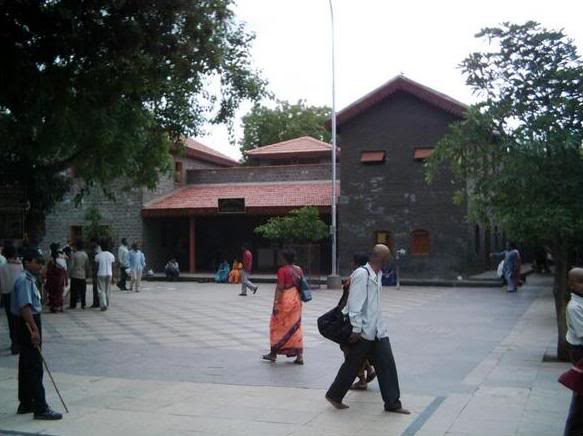
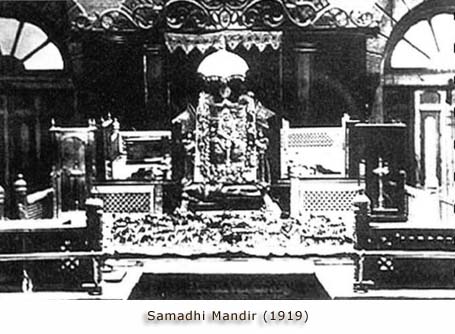
.jpeg)
.jpeg)
.jpeg)
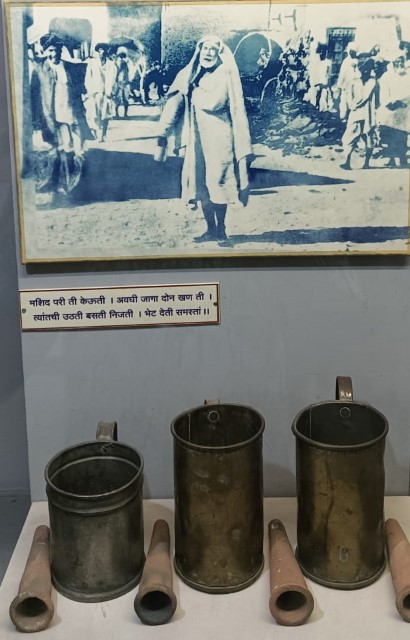
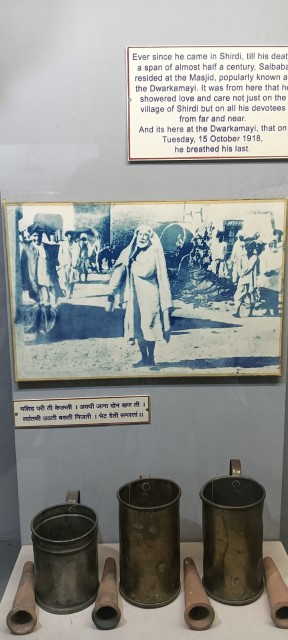
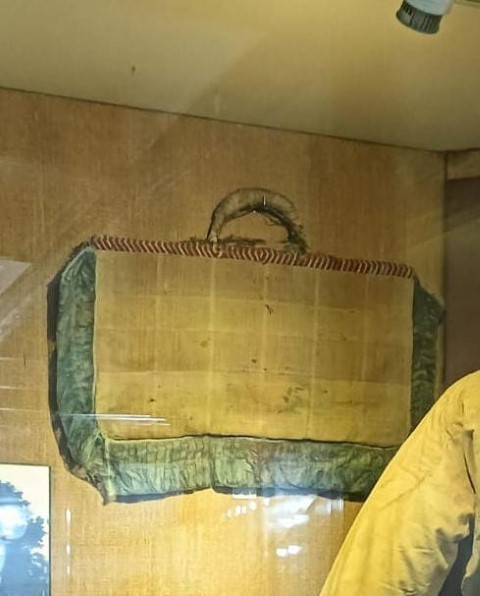
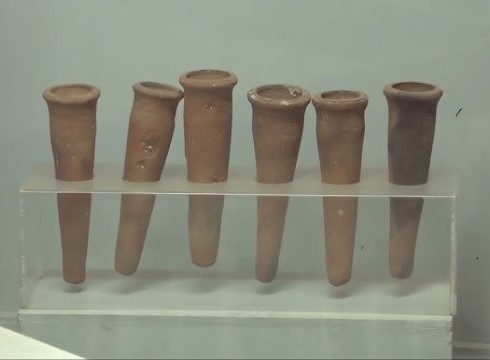

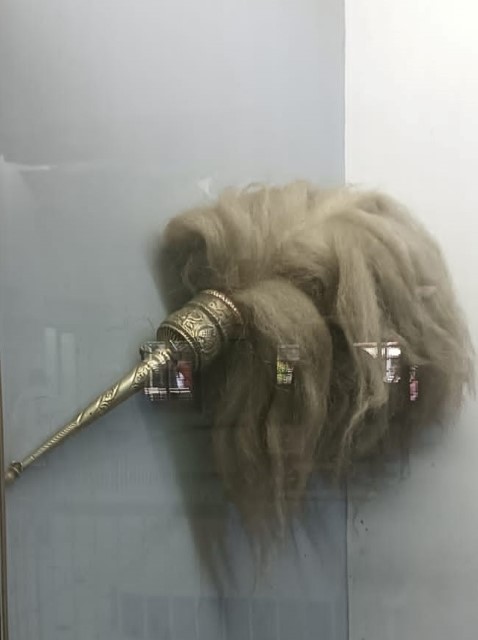
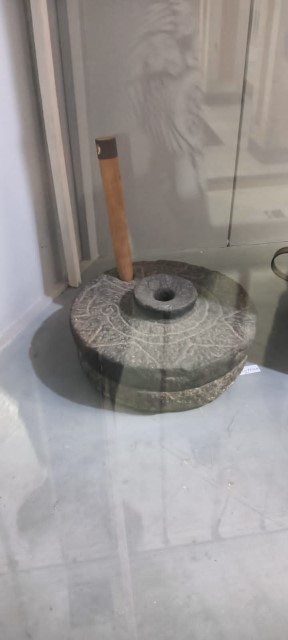
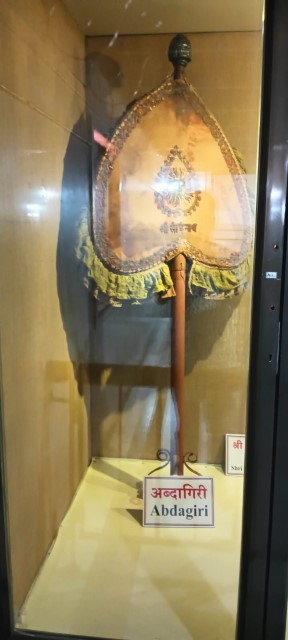
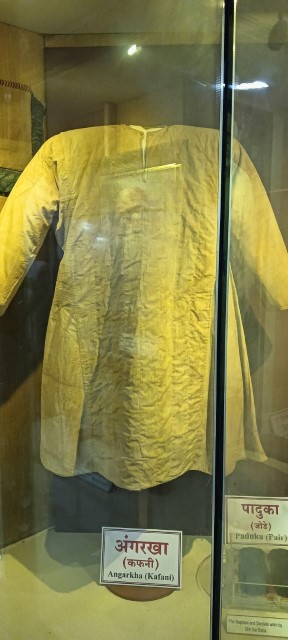
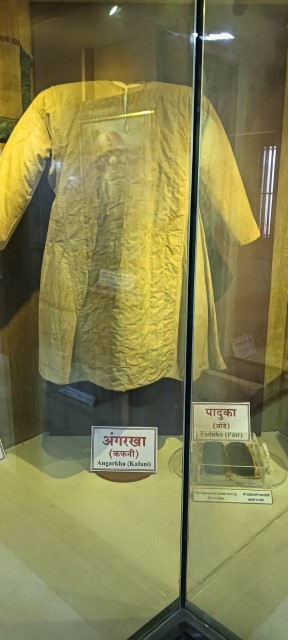
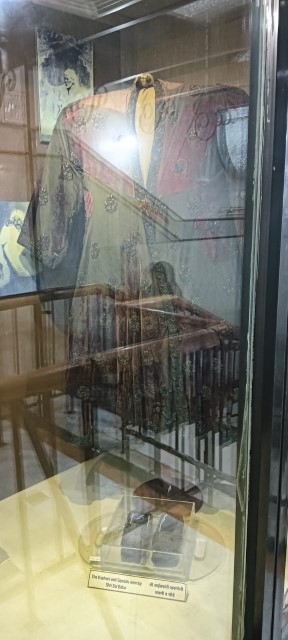
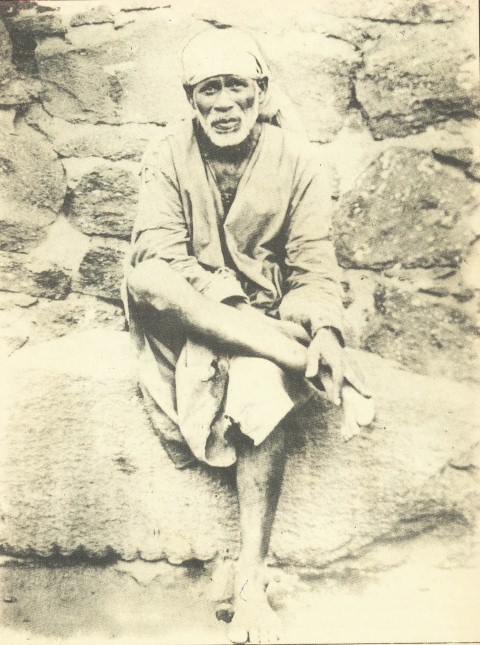
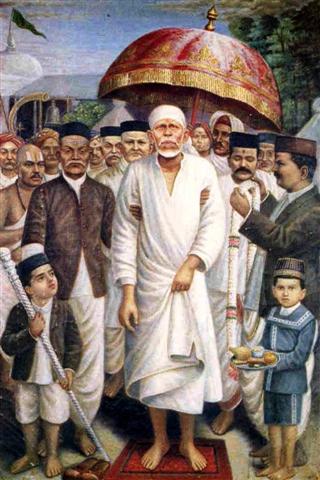
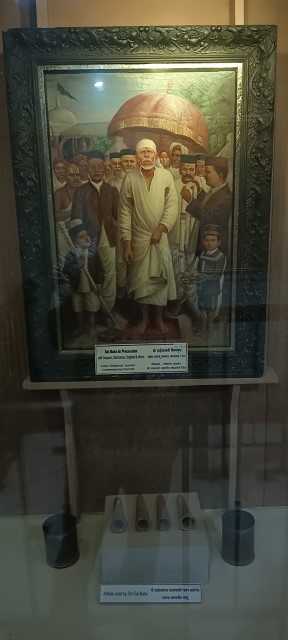
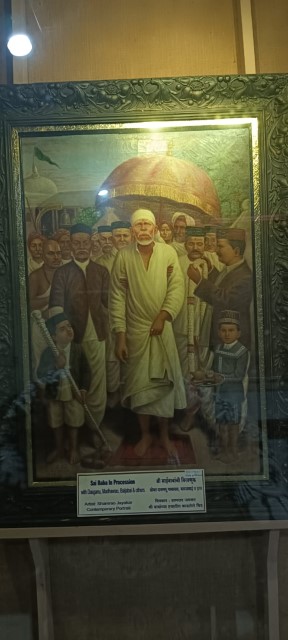
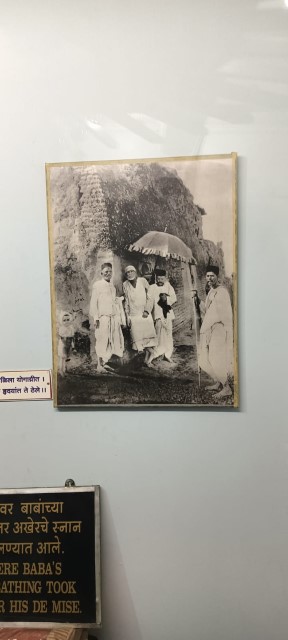
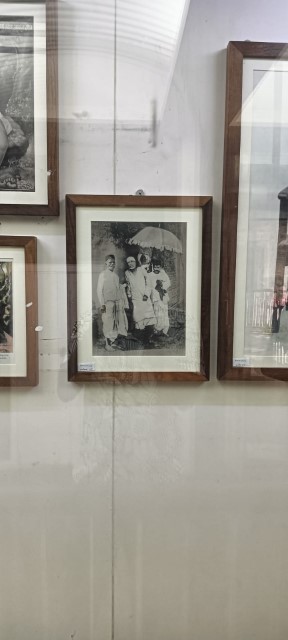
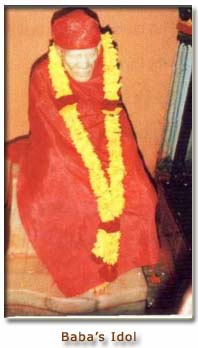
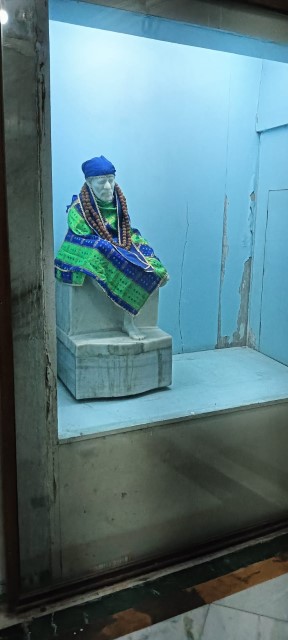

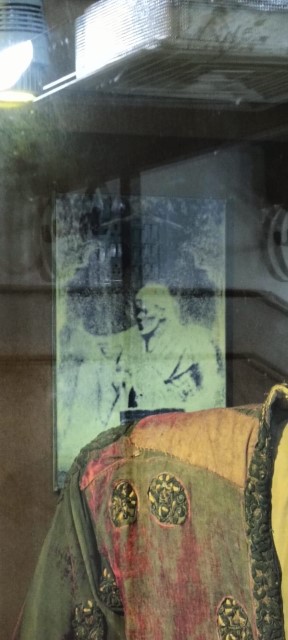


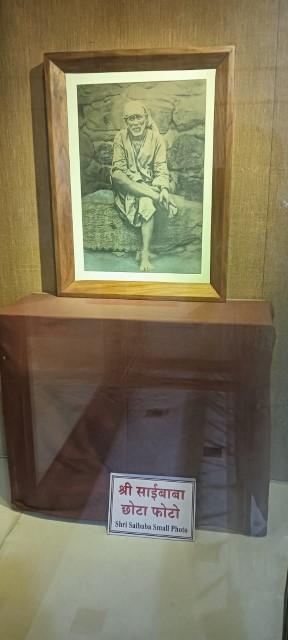
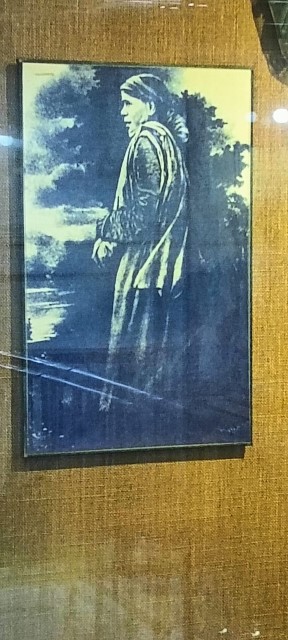
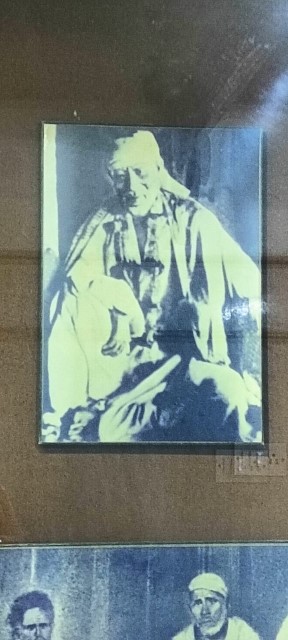
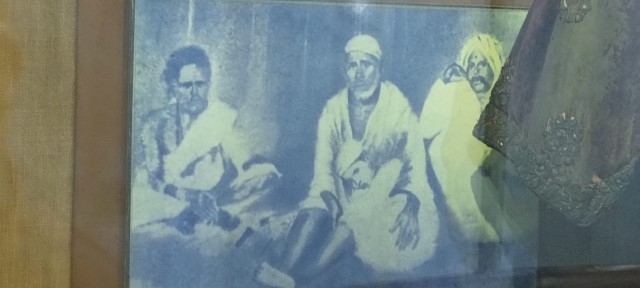
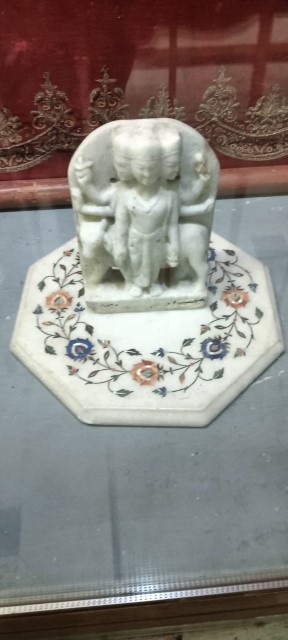
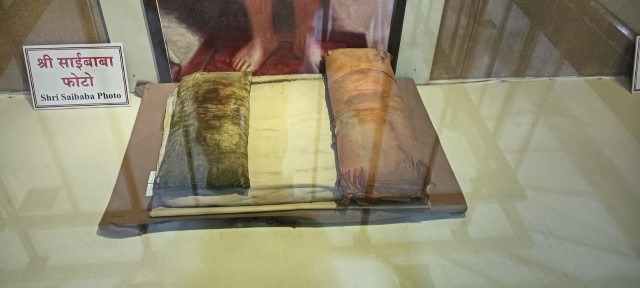
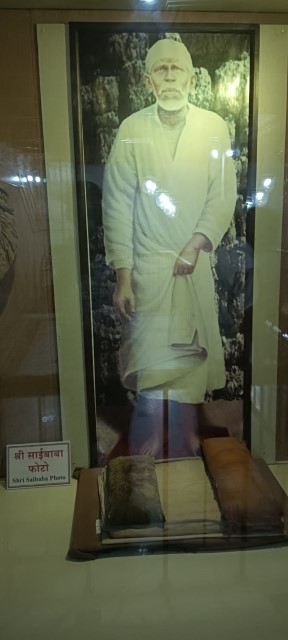
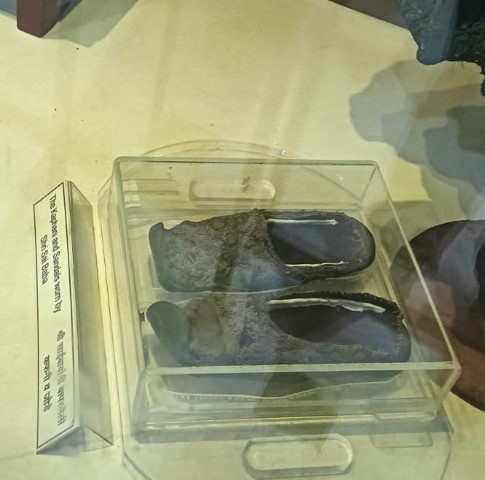
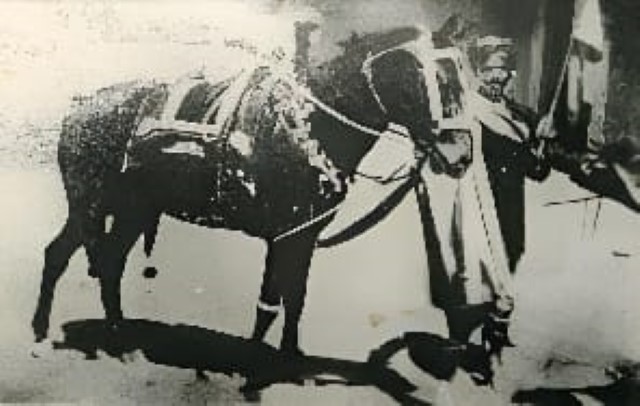
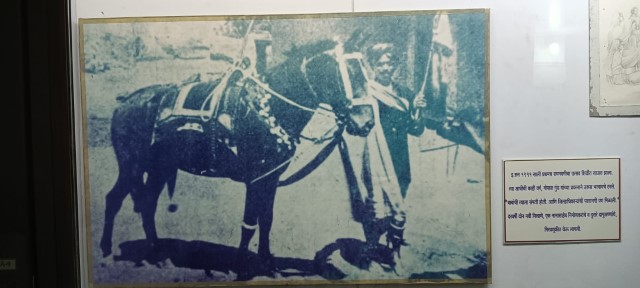
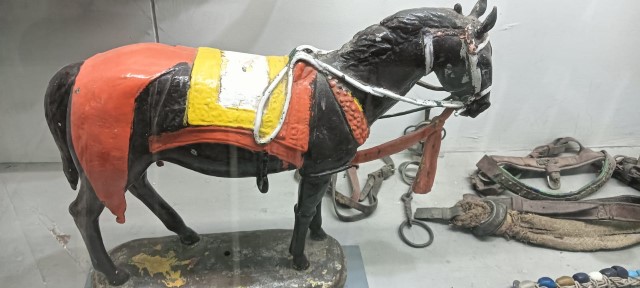
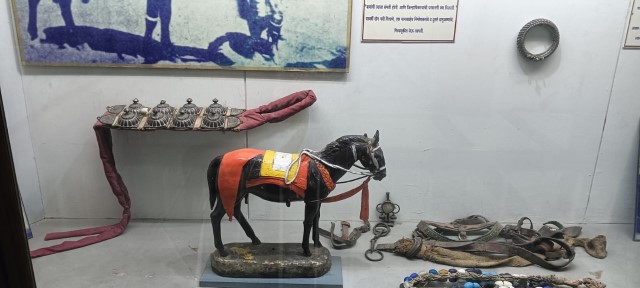
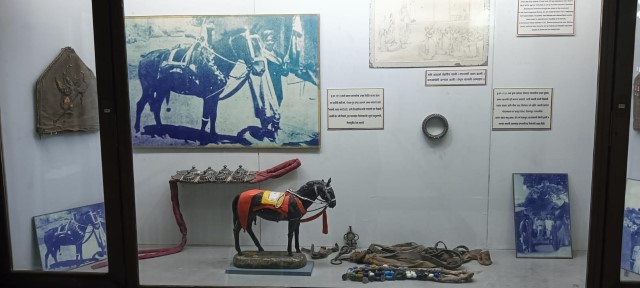
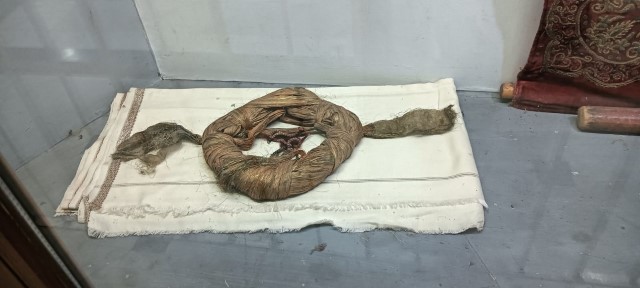

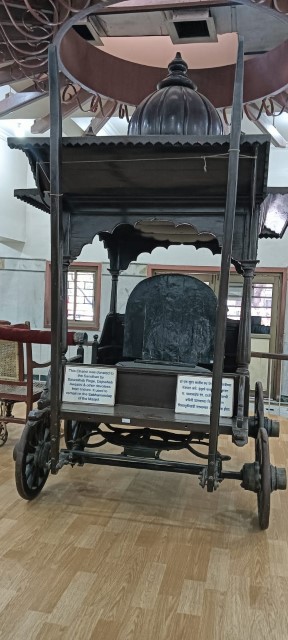
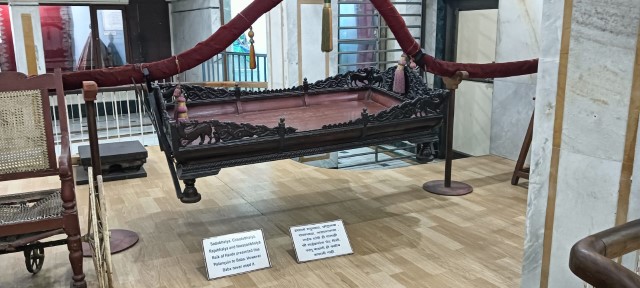


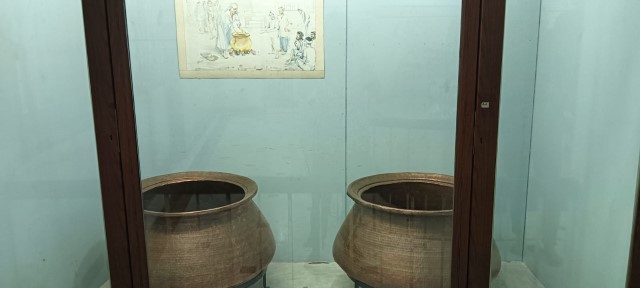
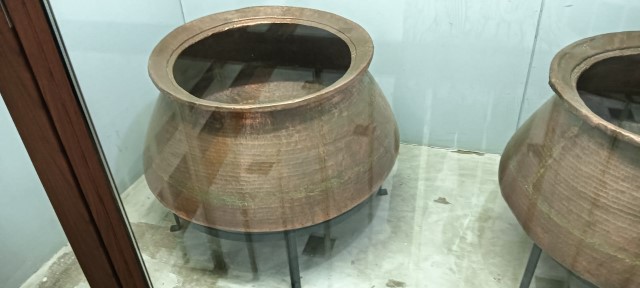
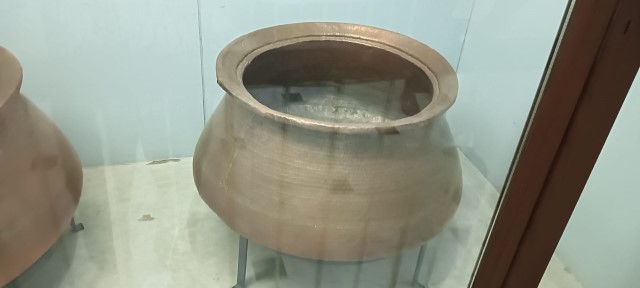

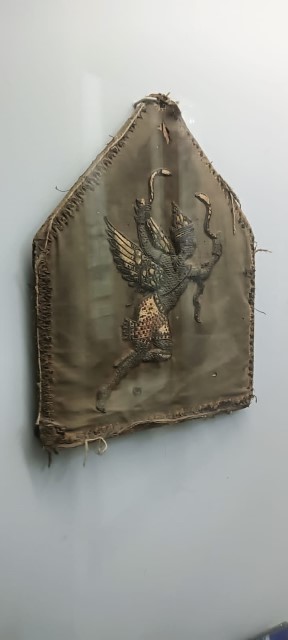
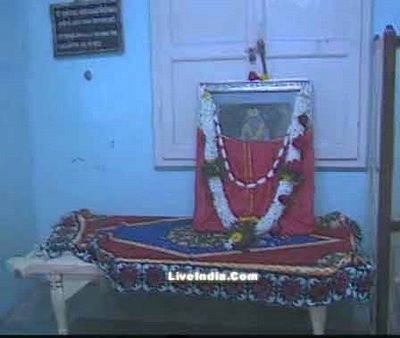
.jpg)
